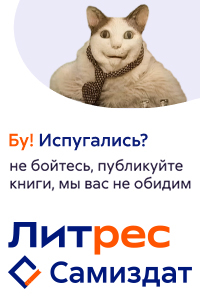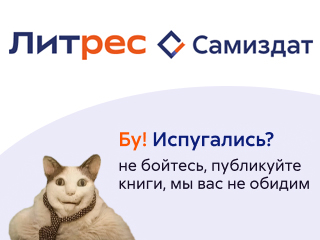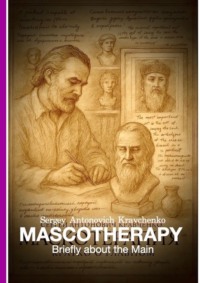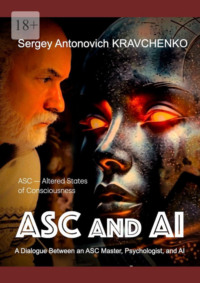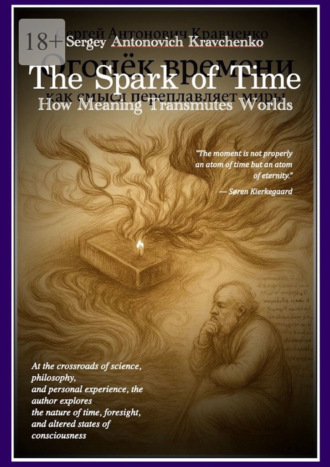
Полная версия
The Spark of Time. How Meaning Transmutes Worlds
Конечно, я сохраню структуру с подзаголовками и маркированными пунктами. Вот перевод:
Chapter 6. Quantum Physics and Quantum Entanglement
«Entanglement is the characteristic trait of quantum mechanics.»
– Erwin Schrödinger
At the beginning of the 20th century, physics encountered something that, in human terms, looks almost mystical: the microworld turned out to be organized in a way completely different from what we are used to thinking, based on everyday experience. Quanta, superpositions, probability jumps – all this changed our language about reality. For the theme of time, the phenomenon of quantum entanglement is especially important: when two (or more) systems become part of a single whole, the measurement of one’s state instantly correlates with the state of the other – regardless of how far apart they are.
I want to emphasize two points that are often confused in popular accounts.
– First: entanglement is an experimentally confirmed fact (classic experiments – Aspect et al., 1982; numerous subsequent studies closed various «loopholes» in Bell inequality tests).
– Second: it is not about transmitting useful information faster than light – theory and experiments are consistent with the prohibition of superluminal signaling. Entangled correlations are real; they cannot be used to send a controllable message. This subtle but fundamental distinction must be kept in mind when we create metaphors and when we extend the idea into the domain of psychology.
What Experiments Have Shown and Why We Need to Know It
A series of experiments, in which Aspect (1982) played a key role, and much later «loophole-free» tests (Hensen et al., 2015 and others), demonstrated violations of Bell inequalities – meaning that quantum mechanics requires us to abandon either locality or a realist view of particles having properties prior to measurement.
Practically, this means: nature at its most fundamental level is organized differently from what we intuitively assume; connections are possible «beyond» local space-time in the sense that correlations cannot be explained by conventional local models.
These discoveries sparked a technological leap:
– Quantum cryptography (BB84 and later implementations) provides methods of secure key distribution.
– Quantum computing employs superposition and entanglement to solve problems inaccessible to classical machines.
– Quantum networks are already emerging – precursors of a future distributed quantum internet.
Theory and practice go hand in hand: we see that the principles of quantum mechanics work in engineering systems and can be harnessed for entirely new classes of technologies.
From Physics to Consciousness – Where Is Caution Needed?
For me, as a researcher of time and altered states of consciousness (ASC), it is natural to ask: if physics contains nonlocal correlations, could this serve as a metaphor (or even a model) for understanding deep connections between individual consciousnesses?
This question is tempting and often fueled in popular-science and parascientific discussions. Yet we must be precise: transferring concepts from one domain to another requires caution. Quantum entanglement is a strictly formal construct within the context of microscopic systems; any hypothesis about its role in the brain or in the interconnection of consciousness must withstand rigorous empirical testing and respect the constraints of physics (including the ban on faster-than-light communication).
Nevertheless, several research lines and hypotheses deserve attention and discussion – as fruitful, albeit controversial, directions.
Theories and Hypotheses (briefly, with «controversial» noted where necessary)
1. Orch-OR (Penrose & Hameroff).
The hypothesis suggests that microquantum processes in neuronal microtubules may contribute to the emergence of consciousness and that quantum coherence in such structures has functional significance (Penrose, 1989; Hameroff & Penrose, 2014). It is a beautiful and ambitious idea, but it remains controversial: critics point to problems with maintaining coherence in the «warm and noisy» environment of the brain (see Tegmark’s critique and others).
2. Global or collective consciousness.
Projects and ideas (ranging from parapsychological initiatives to efforts such as the Global Consciousness Project) claim that major collective events manifest in the statistics of random generators and that some form of «connection» between consciousnesses is possible. These projects produce intriguing data, but their interpretation remains highly contested and requires preregistered protocols and independent replications.
3. Quantum analogues in cognitive models.
In cognitive science, models have emerged that use the mathematics of quantum theory (without assuming quantum processes in the brain) to describe irrational probability shifts, superpositions of meanings, and contextuality effects in decision-making. Here, «quantum» is usually a mathematical metaphor, offering flexible tools for modeling cognitive phenomena.
Altered States of Consciousness and Quantum Metaphors
I often encounter the thesis: «ASCs show that consciousness transcends time; perhaps at this level some quantum logic operates.» I approach this with both respect and skepticism.
– On the one hand, ASCs indeed demonstrate phenomena of synchronicity, sudden insights, and experiences of «timelessness» – and the image of entanglement as the unity of scattered points seems fitting.
– On the other hand, to claim this as proof of the quantum nature of consciousness is premature. We need precise experiments: hypotheses, preregistration, statistical verification, and independent replications.
My preferred practical program looks like this:
– Use quantum physics as a source of methodological and mathematical ideas (new notions of correlation, nonlocality, contextuality).
– Construct tests at the levels of behavior, neurophysiology, and semantics that can be objectively verified.
For example:
– Study how moments of strong semantic coherence in a group (based on NLP analysis of verbal reports) correlate with changes in intersubject neural synchrony.
– Use randomized and blind protocols to test whether group alignment increases the likelihood of predictive coincidences above chance levels.
This is down-to-earth science, even if inspired by celestial metaphors.
Examples of Technological and Methodological Applications
1. Quantum cryptography and security.
Here the practical effect is already evident: the principles of quantum mechanics are used to generate and distribute keys whose interception is easily detected.
2. Quantum computing and data analysis.
The ability of quantum devices to efficiently explore vast state spaces promises tools for complex analysis of patterns in large databases of predictions and ASC diaries. AI + quantum algorithms may accelerate the detection of structures and patterns too subtle for humans to notice.
3. Hypothetical experiments on «intentional influence.»
Rigorously controlled, preregistered tests of whether human intention affects the statistics of quantum outcomes remain highly controversial, but, with proper methodology, could shed light on the limits of possibility (and usually yield null results when adequately controlled).
Neurophysiology: Where Quantum Remains a Metaphor, and Where It Offers Real Markers
So far, the most reliable connecting line is not a direct «quantum microchip of the brain → subjective experience,» but rather the fact that quantum ideas inspire new ways of thinking about information, correlation, and contextuality.
At the brain level, we have convincing markers of ASCs:
– rhythms (theta, alpha),
– reconfiguration of the DMN,
– changes in phase synchrony between regions.
These biophysical markers can be measured and analyzed, and hypotheses can be built on their basis. Precisely such multimodal protocols – EEG/fMRI + semantic analysis of prediction reports + statistical verification – provide a path from metaphor to scientific testing.
Ethical Notes and Methodological Rules
When we speak of subtle hypotheses (quantum consciousness, global mind networks), we must remember our responsibility. Such ideas easily become fodder for speculation, manipulation, and unscientific claims.
I insist on three rules:
– Preregistration of experiments and verification criteria.
– Blind verification and independent replication.
– Careful ethical evaluation of the impact on participants (especially in ASC studies).
Conclusion – Metaphor and Method
Quantum entanglement is not a ready-made instruction for understanding consciousness, but it is a powerful conceptual platform. It reminds us that the world at its foundation is connected in ways that defy our habitual intuitions of causality.
As a practitioner, I take from quantum physics not a dogma but methodological courage: to use nonlocal ideas as inspiration for new hypotheses – but to test them in grounded ways, through data, protocols, and replications.
Chapter 7. The Concept of the «Time Crystal» and Contemporary Research
«Time is nature’s way of keeping everything from happening at once.»
– John A. Wheeler
In recent decades, I have been increasingly drawn to those areas of physics and technology where time ceases to be a mere background and itself becomes a property of matter. The concept of the «time crystal» is one such idea – one that exerts a heavy yet subtle influence on my thinking, both as a researcher of altered states of consciousness (ASCs) and as a human being seeking bridges between meaning and event.
What is a «time crystal»? Briefly and to the point
The idea appeared in the work of Frank Wilczek in 2012: if an ordinary crystal breaks spatial symmetry by arranging atoms into a periodic lattice, then could we imagine a system that spontaneously breaks time symmetry and demonstrates periodicity within the flow of time itself? Such an object was named a «time crystal.» In principle, in its fundamental state the system can display ordered oscillations in time without consuming external energy in steady-state mode – behavior that in classical terms seemed impossible. Wilczek described it as a new state of matter «where time symmetry is broken just as spatial symmetry is broken in ordinary crystals.»
The idea soon found experimental confirmation: beginning in 2017, independent groups demonstrated discrete time crystals in controlled quantum systems (ion traps, superconducting qubits, and others). These experiments revealed the possibility of stable periodicity in time within open, driven quantum systems – a phenomenon now studied as a new phase of matter.
Why this matters to me as a psychologist and researcher of ASCs
At first glance, time crystals belong purely to quantum physics and engineering. Yet I am interested not only in the technology but also in the idea that time can locally condense into stable forms – «points,» «rhythms,» «structures» that hold meaning and provide support for events. In my terms, this is a direct metaphor and possible model for the conversion point and for the working hypothesis of the TCC (Temporal Crystal Condensate): local ordering of meanings and neurophysiological coordination, where semantics «crystallizes» and gains enhanced statistical linkage with probable futures.
If in a quantum system oscillation in time becomes stable and autonomous, then we may imagine a similar local autonomy in networks of consciousness: phases of heightened semantic coherence that «hold» and give form to events. This is not proof. It is a hypothesis, a methodological prompt: to study, to model, to experiment.
Scientific milestones and key contributions (briefly, by name)
– Theoretical initiative: Frank Wilczek (2012) proposed the idea of time crystals as a new type of symmetry breaking.
– Experimental realizations (2017 onward): independent groups demonstrated discrete time crystals in ion traps and superconducting systems (notably the observation of DTC in Nature 2017 and subsequent works), bringing the idea into the realm of experimentally accessible phenomena.
– Current directions: time crystals in spin chains, in superconductors, studies of robustness to noise and decoherence, applications in quantum simulations, and possible architectures for stable qubits.
Technological and practical perspectives
The practical side has significance both for technology and for consciousness:
– Quantum computers and stable qubits. Temporal structures may provide «self-sustaining» dynamics for storing quantum information, reducing decoherence problems. This opens a path toward more robust logical elements.
– Quantum clocks and metrology. The periodicity of time crystals suggests new approaches to timing and to improving the accuracy of time measurement.
– Information channels in time. The idea of «recording» information in temporal patterns is promising for novel encoding and transmission protocols, where not only spatial but also temporal patterning matters.
– Psychotechnologies and therapy. If local «time crystals» of meaning are possible in neural ensembles – whether as metaphor or as real phenomenal formations – we could develop methods that help induce stable, integrative temporal patterns in psychotherapy (safe protocols for entering ASCs, integration through mask therapy, rhythm synchronization).
Interdisciplinary paths and methodology for testing the TCC hypothesis
I propose several concrete directions of research that can be implemented in an integrated scientific program:
Конец ознакомительного фрагмента.
Текст предоставлен ООО «Литрес».
Прочитайте эту книгу целиком, купив полную легальную версию на Литрес.
Безопасно оплатить книгу можно банковской картой Visa, MasterCard, Maestro, со счета мобильного телефона, с платежного терминала, в салоне МТС или Связной, через PayPal, WebMoney, Яндекс.Деньги, QIWI Кошелек, бонусными картами или другим удобным Вам способом.
